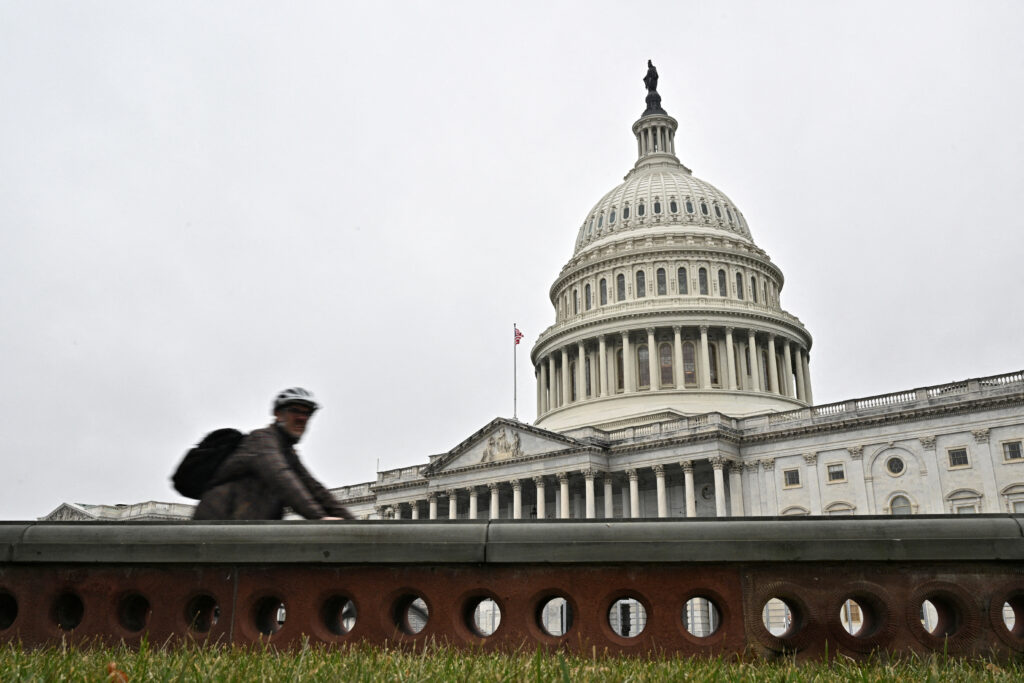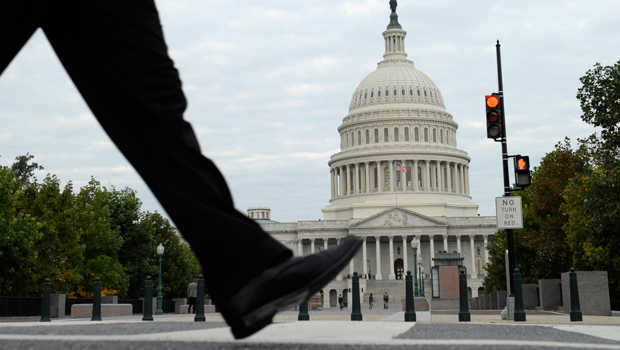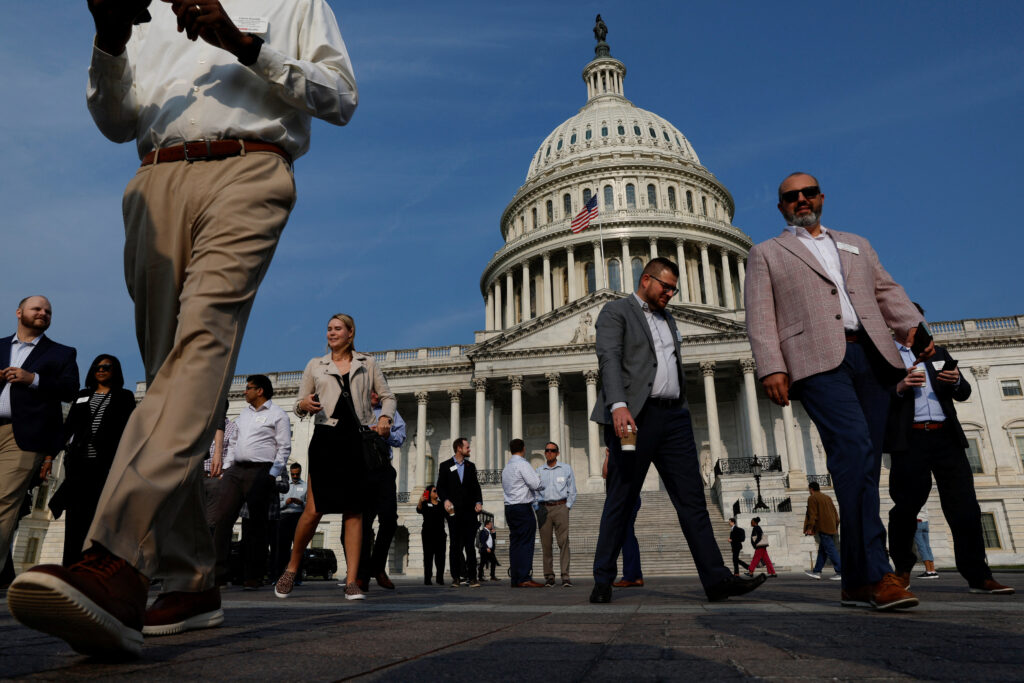Debt Ceiling Debate: Congress Reaches a Decision
The ongoing debt ceiling debate has finally come to an end, as the United States House of Representatives passed a bill to increase the debt limit. The legislation, which garnered broad bipartisan support, will allow the government to borrow funds necessary to cover its financial obligations and prevent a catastrophic default. This decision is a major relief for lawmakers, who have been grappling with the issue for weeks, and will undoubtedly have a significant impact on the nation’s economic future. In this blog post, we’ll delve deeper into the implications of the debt ceiling debate and analyze how this decision could shape the country’s fiscal policies moving forward.

What Is the Debt Ceiling?
The debt ceiling is a limit set by Congress on how much debt the federal government can legally accumulate. This means that the government cannot borrow more money beyond a certain amount without Congress’s approval. The current debt ceiling limit is set at $28.4 trillion.
The debt ceiling was first established in 1917, and it has been raised dozens of times since then to accommodate the government’s spending needs. While some argue that the debt ceiling helps to control government spending and ensure fiscal responsibility, others argue that it’s an unnecessary bureaucratic hurdle that can lead to harmful economic consequences if not raised when necessary.
It’s important to note that the debt ceiling does not control or limit the amount of money that Congress can allocate for federal spending. It only sets a limit on how much the government can borrow to fund that spending.

What Happens If the Debt Ceiling Isn’t Raised?
The consequences of not raising the debt ceiling could be catastrophic for the US economy. If the government reaches its borrowing limit, it would be unable to pay its bills, including its debt obligations. This would result in a default, which would be a devastating blow to the country’s creditworthiness and economic stability.
A default would lead to a sharp increase in interest rates, making it harder and more expensive for the government to borrow money in the future. This would, in turn, have a ripple effect on the entire economy, with businesses and consumers facing higher borrowing costs. Additionally, a default would cause chaos in financial markets, as investors scramble to avoid losses.
Beyond the economic consequences, a default could have far-reaching political ramifications as well. The US’s standing as a global superpower could be weakened, and its ability to influence international affairs could be severely curtailed.
In short, failing to raise the debt ceiling would be a disastrous outcome for the country. It is essential that Congress takes action to avoid such a scenario.

Who Is for and Against Raising the Debt Ceiling?
The debate surrounding the US debt ceiling has been a divisive issue for years. Those who support raising the debt ceiling argue that it is necessary to prevent the government from defaulting on its financial obligations. On the other hand, opponents of raising the debt ceiling argue that it allows the government to continue spending money it doesn’t have, adding to the national debt.
Democrats generally support raising the debt ceiling, citing the importance of continuing government operations and programs. They argue that raising the debt ceiling is necessary to prevent a government shutdown, which could have disastrous effects on the economy. Republicans, however, are often divided on the issue. Some see it as a necessary evil to prevent economic catastrophe, while others believe it is an opportunity to push for spending cuts and fiscal responsibility.
In the current debate, there has been a surprising amount of bipartisan support for raising the debt ceiling. This is largely due to the urgent nature of the situation, as failing to raise the debt ceiling could have severe consequences. Both Democrats and Republicans recognize that it is in the country’s best interest to avoid a default and ensure the government’s financial stability.
Ultimately, the decision to raise the debt ceiling will have significant implications for the country’s economic future. It remains to be seen what compromises and agreements will be made in the coming weeks and months, but it is clear that both sides will need to work together to find a solution that is best for the nation as a whole.

How Did the Vote to Raise the Debt Ceiling Go?
On Tuesday, September 21st, the House of Representatives passed a bill to raise the debt ceiling with broad bipartisan support. The bill passed with a vote of 219-206, with all but two Democrats voting in favor of the measure and all but nine Republicans voting against it.
The vote came after weeks of political wrangling between Democrats and Republicans, who disagreed over how to handle the nation’s debt limit. Democrats argued that failure to raise the debt ceiling would result in a catastrophic economic collapse, while Republicans insisted on offsetting any increase in spending with cuts elsewhere in the budget.
Despite these disagreements, the bill ultimately passed with the support of a significant number of Republicans, many of whom were swayed by the potential consequences of a government shutdown or default. The passage of the bill is seen as a victory for President Biden and the Democratic Party, who were able to rally support from across the aisle and avoid a potentially damaging fiscal crisis.
While the bill has yet to be signed into law, it is expected to pass the Senate with similar levels of bipartisan support. Once signed into law, the debt ceiling will be raised through December 2022, giving lawmakers time to work on a longer-term solution to the country’s debt and spending issues.
In summary, the vote to raise the debt ceiling went relatively smoothly, with strong bipartisan support helping to push the bill through the House of Representatives. While disagreements remain over the best way to handle the country’s debt and spending, the passage of this bill represents a step towards greater stability and economic security for the United States.

What Happens Next?
Now that the debt ceiling bill has passed the House with broad bipartisan support, it will move on to the Senate for consideration. If it passes there, it will then go to President Biden’s desk for his signature. It is expected that the Senate will also pass the bill with bipartisan support, as many Republican senators have stated their support for raising the debt ceiling to prevent a government shutdown and default.
Assuming the bill becomes law, the US will be able to continue to borrow money to fund government operations and pay its bills, avoiding the potential economic disaster that could result from a default. However, this is only a short-term solution. The bill raises the debt ceiling until December 2022, at which point Congress will need to consider raising it again.
There are also larger issues at play, such as the overall size and sustainability of the US national debt. While the debt ceiling is a specific limit on how much the US can borrow, the total amount of debt that the country has is still a cause for concern for many economists and policymakers.
In short, while the passage of the debt ceiling bill is a positive step forward in preventing an immediate crisis, it is important for Congress to address the larger issue of the national debt in the long term.
